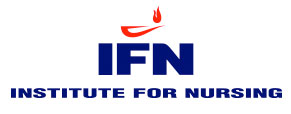Tips on repairing sun damaged or stressed skin
Hello Healthy New Jersey Nurses!
Now that June is coming to an end, it’s time to complete our summer skin health emails with tips on repairing sun damaged or stressed skin. Here are some tips, treatment options and ideas regarding skin repair after sun damage.
Most early damage to the skin is cosmetic and is caused by the increased production of melanocytes. The extra melanin can make your skin look tanned or darker after sun exposure. These superficial darkened areas and fine lines can be reduced with natural skin treatments. For minimal sun stress, try getting creative this June and experiment with some home remedies:
Natural Honey Mask – Apply natural dark honey to your face and other exposed areas of the body as a rejuvenating mask and cleanser. Spread a thin layer onto the skin and let it sit for 20 to 30 minutes. Wash off the honey with warm water and pat the skin dry. Honey, particularly the dark varieties, contains high levels of antioxidants that help reduce free-radical damage on the skin due to exposure to the sun, pollution and stress. They work by improving texture, tone and moisture in the skin.
Homemade Toner – Make a home-made toner by mixing a tbsp. of freshly squeezed lemon juice in a half-cup of distilled water. Apply to your skin with a cotton pad and let dry. Leave the toner on the skin or wash off with warm water after 30 minutes to one hour, if desired. Lemon juice contains natural glycolic and alpha hydroxy acids that help to gently exfoliate the superficial layer of skin cells to improve rough skin texture and uneven complexion due to sun damage.
Photoaging – Excessive exposure to the sun early in life can make a person look older than he or she really is. this premature wrinkling and skin damage from sun exposure is call photoaging. Photoaging, unlike natural aging, results in coarse, dry skin; freckling and skin discoloration; leathery skin; and deep wrinkles.
Treatment options for sun-damaged skin
The best way to minimize the effects of photoaging depends on:
- Age, overall health, and medical history
- Severity of skin damage
- Type of skin damage
- Tolerance for specific medications, procedures, or therapies
- Subject opinion/preference
*Moles, scars, and birthmarks change with age. Although there are many anti-aging creams on the market, advanced signs of aging and sun damage may require more invasive dermatological procedures, including the following:
- Botulinum toxin type A. An injection of botulinum toxin (a complex type of protein) into specific muscles will immobilize those muscles, preventing them from forming wrinkles and furrows. The use of botulinum will also soften existing wrinkles.
- Chemical peels. Chemical peels are often used to minimize sun-damaged skin, irregular pigment, and superficial scars. The top layer of skin is removed with a chemical application to the skin. By removing the top layer, the skin regenerates, often improving its appearance.
- Soft tissue augmentation or filler injections.A soft tissue filler is injected beneath the skin to replace the body’s natural collagen that has been lost. There are multiple different kinds of fillers available. Filler is generally used to treat wrinkles, scars, and facial lines.
- Dermabrasion.Dermabrasion may be used to minimize small scars, minor skin surface irregularities, surgical scars, and acne scars. As the name implies, dermabrasion involves removing the top layers of skin with an electrical machine that abrades the skin. As the skin heals from the procedure, the surface appears smoother and fresher.
A gentler version of dermabrasion, called microdermabrasion, uses small particles passed through a vacuum tube to remove aging skin and stimulate new skin growth. This procedure works best on mild to moderate skin damage and may require several treatments. - Intense pulsed light (IPL) therapy. IPL therapy is different from laser therapy in that it delivers multiple wavelengths of light with each pulse (lasers deliver only one wavelength). IPL is a type of nonablative* therapy.
- Laser skin resurfacing. Laser skin resurfacing uses high-energy light to burn away damaged skin. Laser resurfacing may be used to minimize wrinkles and fine scars. A newer treatment option is called nonablative* resurfacing, which also uses a laser as well as electrical energy without damaging the top layers of skin.
*Nonablative dermatological procedures do not remove the epidermal layer of the skin. Ablative procedures remove the top layers of skin.
Aside from obvious cosmetic damage to skin, remember to check your skin for signs of symptoms of skin cancer!
*Melanoma and non-melanoma skin cancers can be invasive.
*As well as growing across the surface of the skin, tumors may grow down through the layers of the dermis. If the tumor grows through the wall of a blood or lymph vessel, the cancer may metastasize.
*Skin cancer is easier to treat successfully when it is caught at an early stage.
- Make sure you check your entire body as skin cancers can sometimes occur in parts of the body not exposed to the sun, for example soles of the feet, between fingers and toes and under nails.
- Undress completely and make sure you have good light.
- Use a mirror to check hard to see spots, like your back and scalp, or get a family member, partner or friend to check it for you.
There are three main types of skin cancer – melanoma (including nodular melanoma), basal cell carcinoma and squamous cell carcinoma.
Melanoma: Most deadly form of skin cancer. If left untreated can spread to other parts of the body. Appears as a new spot or an existing spot that changes in color, size or shape. Can appear on skin not normally exposed to the sun.
Nodular melanoma: Grows quickly. Looks different from common melanomas. Raised and even in color. Many are red or pink and some are brown or black. They are firm to touch and dome-shaped. After a while they begin to bleed and crust.
Basal cell carcinoma: Most common, least dangerous form of skin cancer. Red, pale or pearly in color, appears as a lump or dry, scaly area. May ulcerate or fail to completely heal. Grows slowly, usually on areas that are often exposed to the sun.
Squamous cell carcinoma: A thickened, red scaly spot that may bleed easily, crust or ulcerate. Grows over some months, usually on areas often exposed to the sun. More likely to occur in people over 50 years of age.
A is for Asymmetry – Look for spots that lack symmetry. That is, if a line was drawn through the middle, the two sides would not match up.
B is for Border – A spot with a spreading or irregular edge (notched).
C is for Color – Blotchy spots with a number of colors such as black, blue, red, white and/or gray.
D is for Diameter – Look for spots that are getting bigger.
Prevention is the best way to reduce the risk of skin cancer and sun damage to skin. Stay safe this summer and protect your skin!
Jillian Bailey and Mary Ellen Levine and the Healthy Nurse Healthy Jersey team


